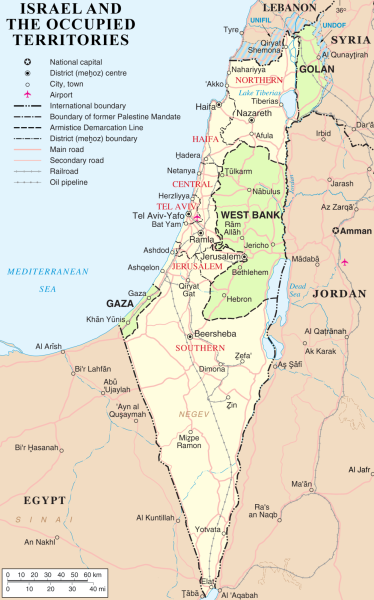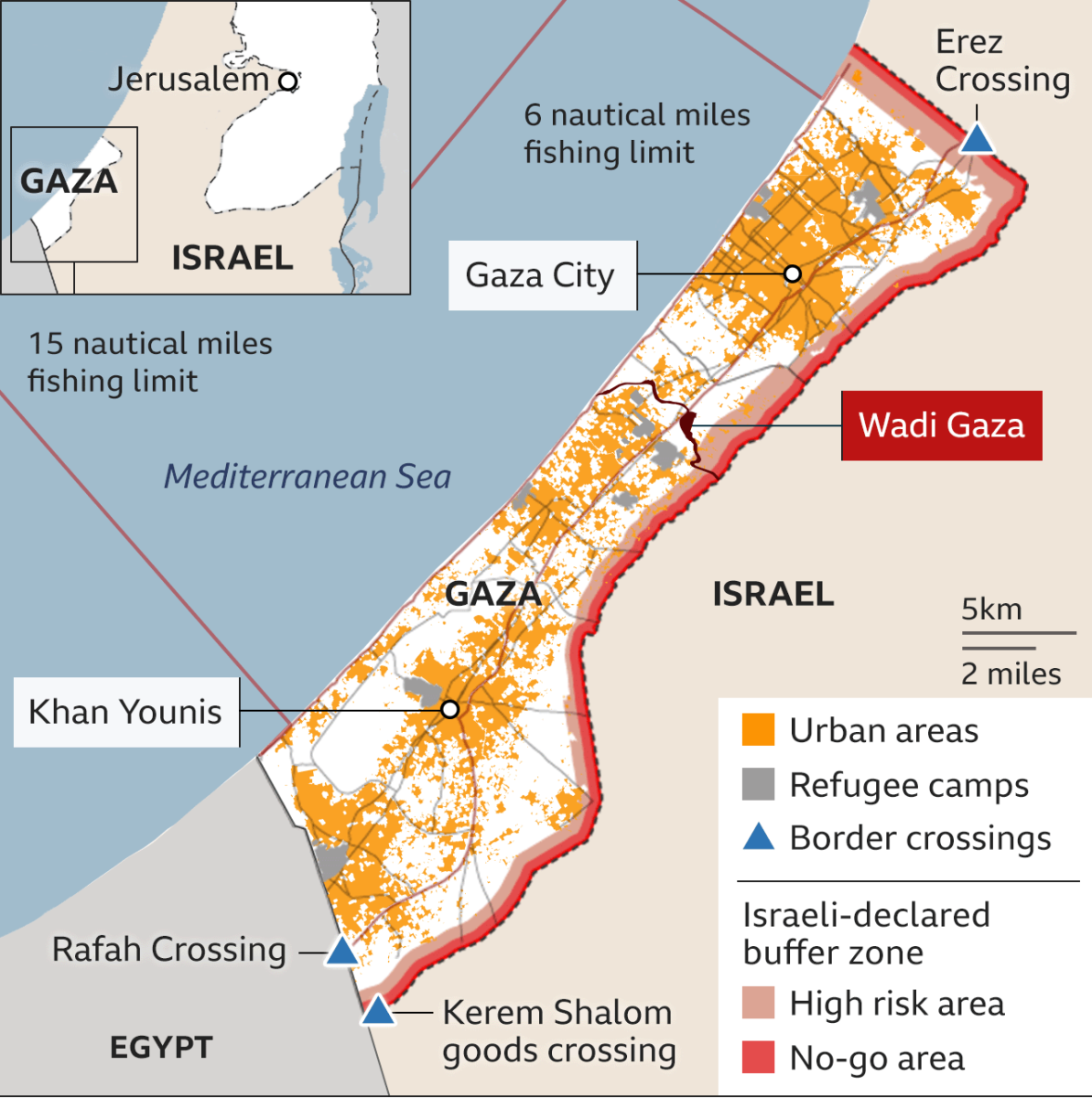Following more than a century of tensions and conflict, war has once again broken out between Israel and Palestine. On the morning of October 7th, Hamas, a Palestinian Islamic militant group that controls the Gaza Strip and which is considered a terrorist organization by the United States and European Union, fired upwards of 2,200 rockets into south and central Israel. Soon after, Hamas soldiers breached Israel’s border, entered Israeli settlements, and began killing civilians and taking hostages. Within hours of Hamas’s assault, Benjamin Netanyahu, the prime minister of Israel, declared the country at war. This declaration has been followed by numerous bombings of the Gaza Strip, cutting off supplies to the area, and threats of future escalation, including a ground invasion. This is a rapidly developing news story which the Advocate is following closely.
History of the Region:
Today’s Israel-Gaza conflict is rooted in over 100 years of complex regional history. Beginning in 1917, with the collapse of the Ottoman Empire at the end of World War I, Great Britain gained control of the Israel-Gaza region and declared part of it a “national home” for Jewish people through the British Mandate of Palestine. From there, tensions grew between native Palestinians, many of whom were Muslim, and the ever-growing number of Jewish immigrants who arrived in Palestine to escape persecution, especially during and after World War II and the attempted genocide of the Jewish people by Nazi Germany and its allies.
In response to the resulting conflict between the two populations, in 1947, the UN partitioned the land into two states, one Arab and one Jewish. Palestinians rejected the plan and in 1948, Israel declared its independence, which caused Palestinian factions to rise up in the first of many wars. The fight for Israeli independence ended with Israel gaining much more of the Palestinian territory than had been allocated by the partition plan, the notable exceptions being the Gaza Strip and the West Bank. Around 700,000 Palestinians were forced to leave their land in what is now remembered in Palestine as the “Nakba,” or “catastrophe” in Arabic. In 1967, the Six Day War broke out between Egypt and Israel when Egypt closed shipping routes used for Israeli trade, after which Israel gained control of the West Bank, Gaza Strip, Sinai Region, the Golan Heights and the predominantly Palestinian East Jerusalem (which had previously been an international area housing Jews, Muslims, and Christians).

The war between Israel and Egypt ended with the Camp David Accords, in which a peace treaty was signed between Israel and Egypt; however, the accords failed to address Palestinian rights. This led to the First Intifada (uprising) in 1987, when Palestinians rose up against the Israeli government. The intifada tried to solidify Palestine as independent from Israel. Following the First Intifada, Hamas was created with the mission of regaining Palestine’s independence and destroying Israel. The formation of Hamas, and continued conflict between Palestinians and the Israeli government, led to a second Intifada in 2000, which lasted for four years. This Second Intifada directly attacked Israeli settlements, which had been encroaching on territory in the Gaza Strip since the 1940s. After the Second Intifada, Hamas gained control of the Gaza Strip by winning an election against its political rival Fatah. Fatah is another political party that wants to regain the Palestinian land lost in 1967, but would prefer to do it through negotiations; it also recognizes Israel as a state, and does not seek to destroy it. Since Hamas won the election in 2007, it has occupied the Gaza Strip, where it has had numerous conflicts with Israel.
The Present Israel-Hamas Conflict:
The present conflict, while uniquely devastating, is a continuation of old disagreements, which primarily revolve around land disputes. First, Israel and Palestine have been unable to reach an agreement where the two states can coexist as separate nations. This is because Palestine refuses to recognize Israel, and Israel demands that Palestine demilitarize to protect Israel’s national security. Second, many Jewish settlements that were built on the Gaza Strip during Israel’s 1967 occupation are now considered illegal, but they continue to expand. Finally, Palestinians want eastern Jerusalem as their capital, whereas Israel believes that the city must remain undivided.
When Hamas launched the largest attack on Israel in recent history on October 7th, it triggered a vicious and brutal conflict on both sides fueled by a century’s worth of conflict. Hamas is believed to have killed upwards of 1,300 Israelis and has captured over 150 hostages. In response, Israel has killed more than 2,200 Palestinians, bringing the death toll of the war to over 3,500 as of October 16,2023. In addition, 22 American citizens have died from Hamas’s attack, and another 17 are missing, possibly being held hostage. Some are comparing this surprise attack to a war in 1973, known by Israelis as the Yom Kippur War and by Arabs as the October War, which was in response to the Israeli gain of the Gaza Strip and West Bank in 1967.
Now, Israel is preparing for a full ground invasion of the Gaza Strip. Almost half of the Gazan population is displaced, and international leaders are at a loss for what to do. While the United States and many western countries declared their support for Israel after the Hamas assault, those viewpoints are shifting as the humanitarian crisis continues to unfold. Currently, water has run out at UN shelters across Gaza, hospitals are filled with overwhelmed doctors, and fuel for generators is running out.
With resources waning and an attack on the horizon, the future of Hamas’s control of the Gaza Strip is looking bleak. However, the future of the Gaza Strip after this conflict is much less certain. Thus, humanitarians, world leaders, Palestinians, and Israelis are all asking the same question: What comes next?










George Ovitt • Oct 31, 2023 at 11:15 am
Thanks, Elizabeth, for you well-researched article on the catastrophe currently unfolding in Palestine/Israel.
If I might add a couple of points: Lord Balfour’s Declaration of 1917 not only “declared” that the land of Palestine, occupied at that time by 600,000 Palestinians (about 85-90% Muslims) and 83,000 Jews, would be a homeland for the Jews, while the Palestinians, an overwhelming majority of whom had lived in Palestine from “time immemorial”, and who, in 1917, were loyal subjects of the Ottoman Empire (not the British Empire), were not even mentioned. British imperialism found in Zionism a politically expedient partner in pursuit of a permanent foothold in the oil-rich Middle East. (See Empires of the Sand, by Efraim Karash).
The military expulsion of the residents of Palestine began in late 1947 under the direction of Zionist militants*, armed and supported by British officers and troops, culminating in Israel’s independence on May 15, 1948. The figure agreed upon by virtually all historians–Israeli and Palestinian–was that 78% of Palestinians were driven from their homes and into exile under during the Nakba. Twenty-two percent of remaining Palestinians found themselves consigned to scattered portions of their homeland. Gaza, captured by Israel in the 1967 war, is now home to 1.8 Palestinians, and is among the most densely populated and poorest territories in the world. No Palestinian, even if living in Tel Aviv, enjoys full citizenship in Israel (they have what are called “passport rights,” not “democratic rights”).
The expulsion of the Palestinians from their homes and farms and businesses was accomplished with considerable violence. [See the Israeli novelist S. Yizhar’s novel Khirbet Khizeh for a lightly fictionalized account, and Rashid Khalidi’s Palestinian Identity for details].
No moral person excuses the actions of the Hamas militants in Israel; the murders of 1300 Jewish residents must never be seen as justified by the history of injustices done to the Palestinian people, for if it were the case that every historical injustice were relentlessly pursued through violence, human history would have ended centuries ago.
On the other hand, no moral person can believe that the random killing of (as of today) over 8,5000 Palestinians–most of them civilians–is a reasonable, or even politically wise, response. Israel has the modern weapons of a global superpower at its disposal; 36,000 Palestinians are packed into every square mile of Gaza, living without food, water, or electricity. What are they to do against 360 F-16s provided by the U.S. (and a carrier group for good measure)?
In what is referred to as the “Arab-Israeli Conflict” there is plenty of blame to go around. Both sides have been intransigent, and the Arab nations that surround Israel, particularly Jordan, Syria, and Saudi Arabia, have not acted in good faith in most negotiations, going back to King Abdullah I’s deals with the British in the 1920s. It seems unlikely that either Israelis or Palestinians will simply vanish, or that either side will renounce their claims to legitimate statehood.
So, Elizabeth, your concluding question, “What comes next?” remains unanswerable.
*An important distinction, as not all European or American Jews were/are Zionists. Pew Research polls show that just over 30% of American Jews believe “that God gave Israel to the Jewish people as a homeland.”
Frank Salerno • Dec 19, 2023 at 6:39 am
Additionally there’s a correction in the article. It is stated that settlements in Gaza remain and have expanded I believe the author meant to say the West Bank as the Gaza settlements were destroyed when Israel pulled out of Gaza and turned it into what is generally referred to as a large open-air prison. But thank you for adding that important historical context George.